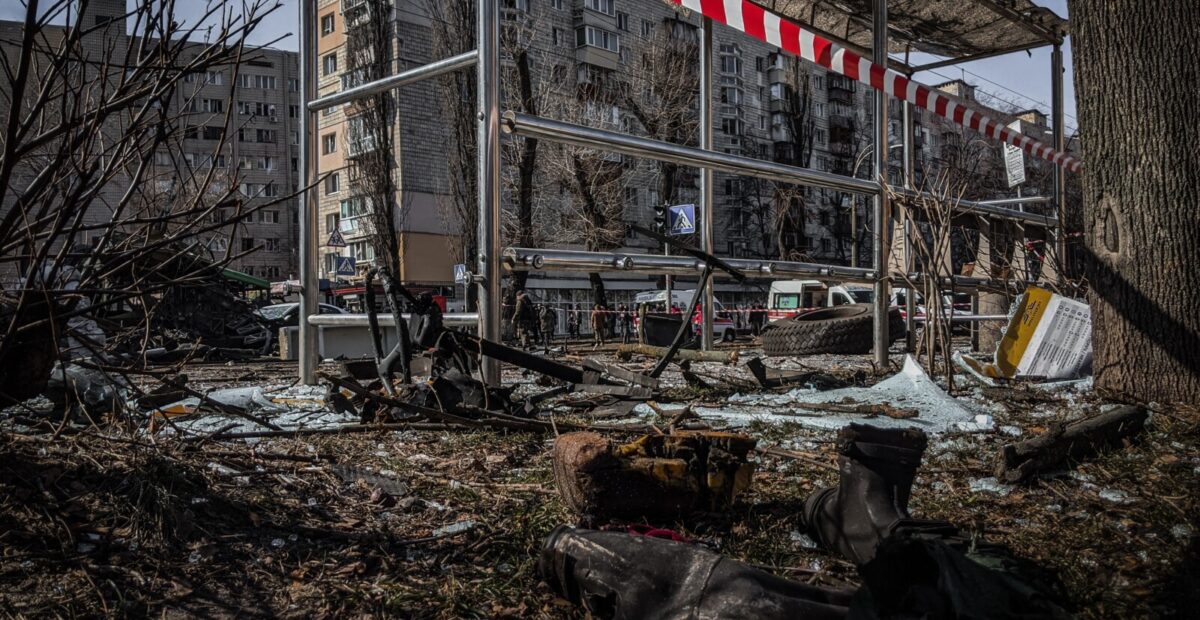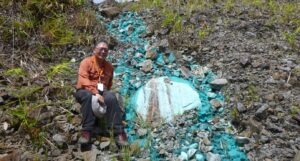
Watch
Don’t fight but… dare to care!

How much do wars pollute? What are the consequences of conflicts on a country’s flora and fauna? We talked about this with Dr Augustine Doronila, an expert in eco-chemistry, who works with the Faculty of Chemistry at the University of Melbourne.

Dr. Doronila, war is harmful to humanity, not only because it destroys human lives, cities, the artistic and cultural heritage of a country, but also because of the consequences it has on the environment, nature, flora and fauna of a country.
Today, with the climate emergency we are experiencing, we can no longer afford it, because it would mean wasting the efforts that part of humanity is making to heal the planet. How does war affect climate change?
This is a very important question today and I think we all agree that it is quite clear that modern warfare has major impacts on the environment.
The current war in Ukraine has unleashed a whole array lethal forces on the people and the environment of that country. We are constantly showed burning wreckage of the towns and cities under siege as well as destroyed landscapes and waterbodies. This horrific scenario has been repeated in so many locations all around the world. Sadly, there are currently more than 40 ongoing wars and conflicts around the world[1].
As a scientist, you know, we could say that it is difficult during times of war to accurately obtain data on the loss of biodiversity, plants, animals, and the disruptions of healthy ecosystem functions, it is not difficult to infer that war releases extensive amounts of greenhouse gasses that cause climate change. Moreover, major contamination of toxic and possibly radioactive compounds occurs in these war-affected and surrounding locations.

Can you give us some examples of what has happened in past conflicts that scientists have actually been able to verify?
I present a series of examples which clearly demonstrate the impact of armed conflict on our fragile life-giving ecosystems. A well-documented recent example was the draining of the Mesopotamian Marshes as part of the protracted Iran-Iraqi wars from 1991. It has been described by the United Nations as a “tragic human and environmental catastrophe” on par with the deforestation of the Amazonian rainforest and by other observers as one of the worst environmental disasters of the 20th century[2].
During the Rwandan civil war from 1990-94 approximately 700,000 people lived in camps on the edge of Virunga national park. The park is home to critically endangered mountain gorillas as well as chimpanzees, elephants, and other megafauna. Large areas of forests were simply destroyed for resettling households. During the genocide, numerous facilities were destroyed, and the construction of new facilities had serious negative effects on the environment. Forests were destroyed in some areas to create new facilities, and this led to soil erosion[3]. And then just like in the Ukraine, the use of very high-powered weapons meant that during and after the conflict, these armaments were also used. Thus, in just two months in 2006, Mai-Mai rebels in the DRC slaughtered almost the entire hippopotamus population of two of Virunga’s rivers – changing the ecosystem forever[4]. The predominantly ethnic Tutsi refugees fled into the Democratic Republic of the Congo, triggering another civil war in this country as a consequence, the Virunga mountains became a war zone. In 1994, the park became the first UNESCO world heritage site listed as endangered because of conflict.
Another example of habitat and biodiversity loss is from Afghanistan whereby the past 30 years of war has stripped the country of its trees, including precious native pistachio woodlands. illegal logging by US-backed warlords and wood harvesting by refugees caused more than one-third of Afghanistan’s forests to vanish between 1990 and 2007. This has been compounded by drought and desertification. Moreover, the number of migratory birds passing through Afghanistan has fallen by 85%.[5]
It’s a long and painful list you’re making, but I imagine if we go back even further, to the tragedies of Vietnam and Japan, for example, the balance can only get worse!
Yes… During the Vietnam war from 1961-71 herbicides were used, during combat operations, to alter landscapes and reduce foliage to enhance visibility with the use of Agent Orange. It was one of severalWar and pollution types of dioxin-based herbicides sprayed by United States forces to destroy crops and obstructing vegetation. During this war, the landscapes in Vietnam, Cambodia, and Laos were exposed to over 77 million L of herbicides covering some 2600 million hectares of land. It was apparent that the defoliation of the landscape resulted in immediate tree and shrub mortality in addition to the local extirpation of many large mammals such as ungulates, carnivores, and elephants[6].
Though the world has only witnessed the destruction of cities of Hiroshima and Nagasaki by nuclear blasts it is enough to be horrified to see that thermal emissions from the explosion of an atomic bomb can have a number of impacts on local ecosystems. The immense release of thermal energy at the detonation’s epicentre results in temperatures far in excess of 3000 °C[7] which would immediately incinerate any living creature in the vicinity of the epicentre. The subsequent impact is due to an outward thermal wave,100–1000 °C[8] which is a risk to most life over its expansion. Here, local vegetation is burnt and defoliated, often perishing through the extreme heat representing severe reductions in plant species richness and abundances as documented in nuclear explosion tests in the Pacific islands[9].
Another major impact of war is the dislocation of many populations causing refugee mass migration crises. It is clear, that peaceful means are crucial in resolving conflicts over natural resources and reduce the need for communities to migrate because of such conflicts[10].

In your opinion, can we afford all that today?
The UN Environmental programme stated that “Over the last 60 years, at least 40% of all internal conflicts have been linked to the exploitation of natural resources. Around the globe, the examples of conflicts linked to natural resources are innumerable, from disputes over access to land in Nepal to secessionist movements linked to distribution of oil and gas profits in Aceh, Indonesia. Resolving natural resource conflicts has become a defining peace and security challenge of the 21st century”[11].
No doubt we have only started to document the life destroying impacts of human warfare on the life sustaining ecosystems on our planet. A greater awareness of these effects may open eyes to making a greater and consistent commitment peace for people everywhere to protect our planet.
The International Union for Conservation of Nature stated “By reducing conflict and conflict potential and by strengthening environmental security we lay the ground for enduring social and environmental sustainability”[12].
Thank you, Dr Doronila. We wish that nations, instead of investing in increasingly deadly and destructive weapons, would “dare” to stop this drift of war once and for all, to finally invest in the common good of peoples, in the care of ecosystems and humanity.
[1] https://revisesociology.com/2021/03/03/ongoing-wars-and-conflicts-in-the-world-today/#:~:text=It%20is%20sad%20to%20say,deaths%20in%202020%20or%202021.
[2] https://wedocs.unep.org/bitstream/handle/20.500.11822/8231/-The%20Mesopotamian%20Marshlands%20_%20Demise%20of%20and%20Ecosystem-2001227.pdf?sequence=3
[3] https://www.accord.org.za/ajcr-issues/environmental-causes-and-impacts-of-the-genocide-in-rwanda/#:~:text=Large%20areas%20of%20forests%20were,this%20led%20to%20soil%20erosion.
[4] https://www.theguardian.com/environment/2014/nov/06/whats-the-environmental-impact-of-modern-war?CMP=Share_AndroidApp_Other
[5] https://watson.brown.edu/costsofwar/
[6] Westing, A.H. 2013a. The second Indochina War of 1961-1975 : its environmental Impact. Dans Arthur H. Westing : pioneer of the environmental impact of war. Springer, New York, NY, USA. pp. 35 à 50.
[7] Pinaev, V.S., et Shcherbakov, V.A. 1996. 1007/BF01998579.
[8] 1968
[9] 1962
[10] https://www.unep.org/news-and-stories/press-release/unep-and-parliament-worlds-religions-launch-new-book-catalyze
[11] https://www.unep.org/news-and-stories/press-release/unep-marks-international-day-preventing-exploitation-environment-war#:~:text=Over%20the%20last%2060%20years,years%20of%20a%20peace%20agreement.



